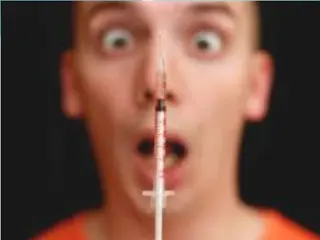Exploring Buffon's Needle Experiment for Estimating Constants
Buffon's Needle experiment involves dropping sticks on a surface with parallel lines to estimate a mathematical constant. By calculating the probability of the sticks crossing the lines at various distances, comparing results using the Buffon theorem, and determining inaccuracies, the experiment aims to explore the precision of obtaining the constant value. The experiment also investigates the independence of the probability of intersecting lines with a needle based on throw height. Conducting experiments with specific parameters further helps in understanding the accuracy of the estimation process.
Download Presentation

Please find below an Image/Link to download the presentation.
The content on the website is provided AS IS for your information and personal use only. It may not be sold, licensed, or shared on other websites without obtaining consent from the author. Download presentation by click this link. If you encounter any issues during the download, it is possible that the publisher has removed the file from their server.
E N D
Presentation Transcript
Problem 1 Buffon s needle 1
Condition of the problem Draw a series of parallel equally spaced lines on a horizontal surface. Pick a bunch of sticks (e.g. matches or needles) slightly shorter or longer than the separation between the lines, and randomly drop them on the surface. It is claimed that the number of times the sticks cross the lines allows estimating the constant to a high precision. 2
Goal and tasks Tasks: Calculate the probability of crossing the lines with sticks at different distances between them Calculate the number by the Buffon theorem Compare the results with the table value of the number Determine inaccuracy this exploration Goal: explore how accurate the value of the number can be obtained by the method of buffon 3
Mathematical model - probability - number of favorable events - number of events = => 4
L needle length r distance between lines angle between needle and straight line - distance between the beginning of the needle and the nearest straight line r L A Inaccuracy ( )=? ????? ?(????????) 100% ?(?????) 5
Conducting experiments Number of Sheets: 5 Sheet format: 4 Needle length (L, cm): 6.5 The distance between the straight lines (r, cm): 5.9, 6.2, 6.5, 6.8, 7.1 The deviation of r from L: -10%, -5%, 0%, 5%, 10% 6
Conducting experiments Demonstration of the possible position of sticks on a piece of paper 7
The dependence of the probability on the throw height h 10 P 0,628 20 0,634 30 0,640 40 0,638 50 0,626 Hence: the probability of intersecting lines with a needle is independent of the throw height 8
Experiment 1 h throw - 20 cm; n (throws) = 500; m (number of intersections) = 351; P = 0.702; r = 5.9 cm ? =2? 2 6,5 ?? 0,702 5,9??= 3,1387319523 3,1387 ??=> ? = 9
Experiment 2 h throw - 20 cm; n (throws) = 500; m (number of intersections) = 330; P = 0.660; r = 6.2 cm ? =2? 2 6,5 ?? 0,660 6,2??= 3,17693055963 3,1769 ??=> ? = 10
Experiment 3 h throw - 20 cm; n (throws) = 500; m (number of intersections) = 317; P = 0.634; r = 6.5 cm ? =2? 2 6,5 ?? 0,634 6,5??= 3,1545741325 3,1546 ??=> ? = 11
Experiment 4 h throw - 20 cm; n (throws) = 500; m (number of intersections) = 304; P = 0.608; r = 6.8 cm ? =2? 2 6,5 ?? 0,608 6,8??= 3,1443498452 3,1444 ??=> ? = =0,1% 12
Experiment 5 h throw - 20 cm;n (throws) = 500; m (number of intersections) = 290; P = 0.572; r = 7.1 cm ? =2? 2 6,5 ?? 0,572 7,1??= 3,1568722681 3,1569 ??=> ? = 13
Table of values obtained during the experiment r (cm) P (obtained) 1 5,9 0,702 3,139 0,1 2 6,2 0,660 3,177 -1,1 3 6,5 0,634 3,155 -0,4 4 6,8 0,608 3,144 -0,1 5 7,1 0,580 3,157 -0,5 -1,5 1,5 14
Conclusion: We calculated the probability of crossing lines with sticks at different distances between them. By the formula of Buffon we calculated the number . The obtained number was compared with the tabulated values. It was found that the inaccuracy ranged from -1.5% to 1.5% 15
r L L1 16























